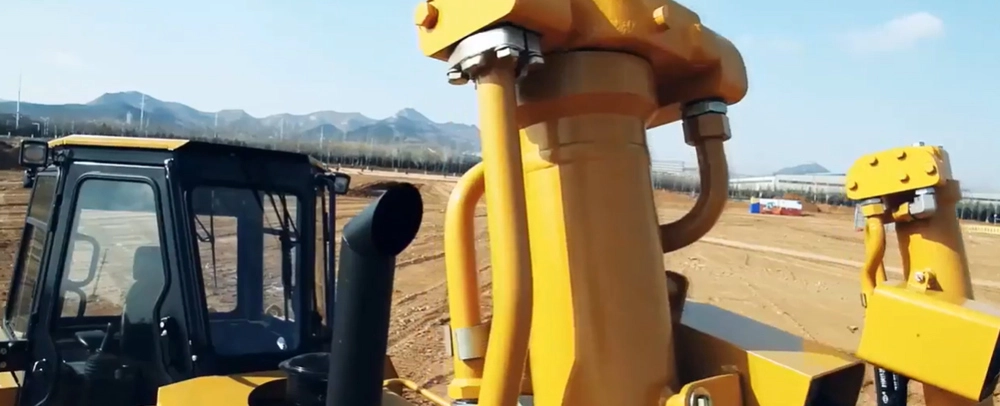Highland bulldozers are specifically engineered to conquer the challenges of high-altitude terrains. These machines feature enhanced engines that are optimized to perform under low oxygen levels, ensuring reliable power delivery. Their tracks are designed with extra-wide and deep treads to provide excellent traction on steep, rocky slopes and in slippery, snow-covered conditions. The blade is typically strong and adjustable, allowing for precise earth-moving and grading tasks. The operator's cab is well-insulated and pressurized, protecting against cold temperatures and thin air. With robust construction and advanced features, highland bulldozers are indispensable tools for infrastructure development, mining, and any project in mountainous regions.
| Pictures | 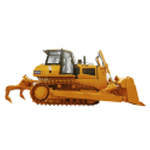 | 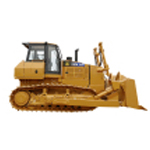 | 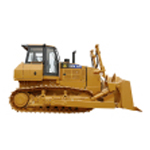 |
| General parameters | |||
| Model | 818F | SEM822D | SEM822D |
| Operating weight (kg) | 17235 | 23680 | 24760 |
| Climbing capacity (°) | 30 | 30 | 30 |
| Ground Specific Pressure (kPa) | 52 | ||
| Power range | 120-220kW | 120-220kW | 120-220kW |
| Power Type | Fuel | ||
| Engine | |||
| Model | WP7G200E472 | WP12 | |
| Flywheel power (kW) | 147 | 162 | 183 |
| Rated speed (r/min) | 2200 | ||
| Emission standard | Euro 4 | ||
| Dimension | |||
| Track plate width (mm) | 560 | 600 | |
| Track Ground Length (mm) | 2515 | ||
| Minimum Turning Radius (mm) | 3950 | ||
| Minimum Ground Clearance (mm) | 400 | ||
| Transmission system | |||
| Type | Dual, closed, electrically controlled hydrostatic transmission | Closed Double Circuit Electrically Controlled Hydrostatic Transmission System | |
| Steering Clutch | Hydrostatic steering system | ||
| Steering Brake | Wet Multi-Plate Brakes | ||
| Number of supporting wheels (single side) (pcs) | 6 | 7 | 7 |
| Number of sprockets (single side) (pcs) | 2 | 2 | |
| Travel speed 1st gear (forward/reverse) (km/h) | 0~10 | 0-10 | |
| Number of track plates | 37 | ||
| Shoveling device | |||
| Type | U-shovel | Coal pushers/U-shovels | |
| Shovel capacity (m³) | 5.6 | ||
| Spade width | 3480 | ||
| Spade Height (mm) | 1280 | ||
| Maximum lifting height (mm) | 1005 | ||
| Maximum depth of cut (mm) | 415 | ||
| Maximum tilt (mm) | 540 |
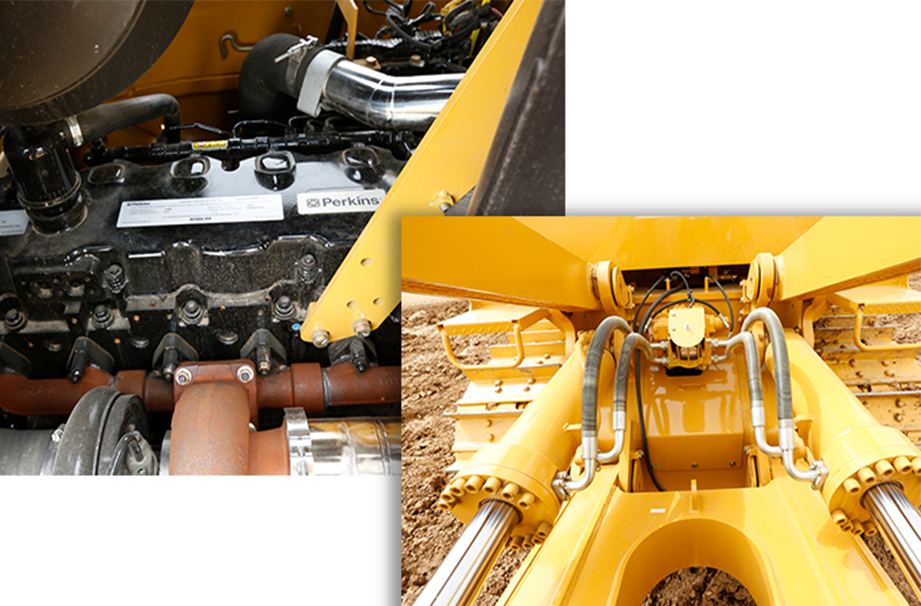
Highland bulldozers have frames and components designed to handle the rigors of high-altitude work. The frame is typically made of high-strength steel, providing a sturdy base for the entire machine. It is engineered to withstand the extreme forces and vibrations encountered on rough terrains.
The undercarriage consists of durable tracks that offer excellent traction on steep slopes and in slippery conditions. The wide-track design helps distribute the machine's weight evenly, reducing ground pressure and preventing sinking.
The blade is a key component, usually large and adjustable. It can be precisely controlled to perform tasks like earth-moving and grading.
Hydraulic systems power the blade's movements, allowing for smooth and efficient operation. The engine is optimized for high-altitude performance, ensuring reliable power output in low-oxygen environments.
The operator's cab is well-insulated and pressurized to protect against cold temperatures and thin air, providing a comfortable and safe working environment for the operator.
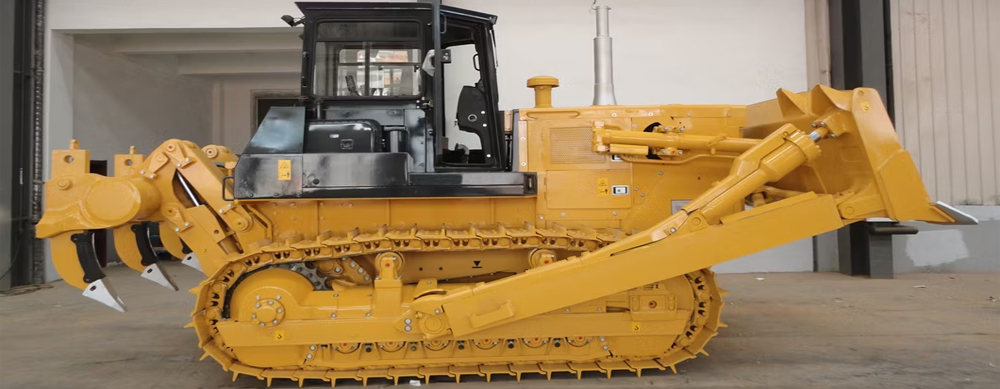
1. Altitude: Determine the altitude of the work site. Different altitudes have different performance requirements for bulldozers.
2. Terrain Conditions: If the work area has complex terrain with steep slopes and rocks, you need to choose a model with a longer track-to-ground contact length and good stability.
3. Climate Conditions: The climate in high-altitude areas is changeable, with low temperatures and large day-night temperature differences.
4. Engine Power: Due to the thin air in high-altitude areas, engine power will be attenuated to a certain extent. You should choose a bulldozer equipped with a high-power engine and with good high-altitude adaptability.
5. Turbo-charging System: An engine with a turbo-charging system can effectively increase the air intake and enhance the engine's performance in high-altitude areas, ensuring that the bulldozer has enough power for earth-moving, climbing and other operations.
6. Blade Type and Size: Choose the appropriate blade according to the work requirements. For example, a U-shaped blade is suitable for pushing and transporting a large amount of earth and rock, while a straight-tilt blade is more conducive to precise leveling work.
7. Ripper Configuration: If the work area has hard frozen soil or rocks, a bulldozer equipped with a ripper is needed to break up the hard strata first and improve work efficiency.

Highland bulldozers are equipped with engines that are optimized for high-altitude operation. These engines have advanced turbocharging systems to compensate for the reduced air density.
The undercarriage of highland bulldozers features wide and durable tracks. The wide-track design distributes the machine's weight more evenly over the ground, reducing the ground pressure.
The blade of a highland bulldozer is designed to handle different types of earth-moving tasks. It is usually large and strong, with a capacity to move significant volumes of soil, snow, or debris. The blade can be adjusted in multiple ways, including height, angle, and tilt.
The operator's cab is designed with the comfort and safety of the operator in mind. It is well-insulated to protect against the cold temperatures prevalent in high-land areas. The cab also has excellent visibility, with large windows that provide a clear view of the work area and the surrounding terrain.
